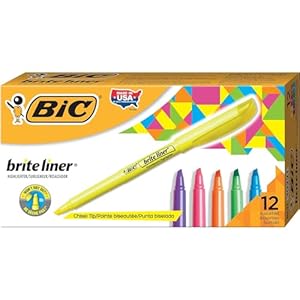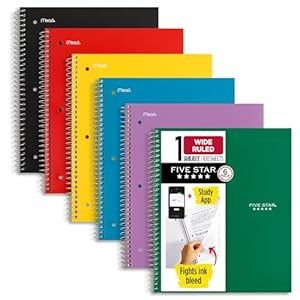Efficient Coaching Strategies To Empower Worker Progress
Within the modern company ecosystem, worker coaching stands as a cornerstone for organizational success. Figuring out the best coaching strategies for workers requires a nuanced strategy that balances organizational objectives, worker studying types, and technological developments. This text delves into the intricacies of training methodologies, evaluates their efficacy, and presents a compelling argument for selecting essentially the most appropriate one.
The Significance Of Tailor-made Coaching Approaches
A report by the Affiliation for Expertise Improvement (ATD) revealed that corporations with complete coaching packages take pleasure in a 24% increased revenue margin than these with restricted worker improvement initiatives. This underscores the importance of deploying efficacious coaching strategies for workers that align with organizational aims.
Exploring Key Coaching Strategies For Workers
A number of approaches to worker coaching exist, starting from conventional instructor-led classes to cutting-edge digital methods. Beneath, we dissect essentially the most outstanding methodologies:
1. On-The-Job Coaching (OJT)
OJT is an immersive strategy the place workers be taught by performing duties below the supervision of skilled mentors. This technique emphasizes experiential studying, enabling workers to accumulate sensible expertise related to their roles.
Benefits
- Fast utility of expertise.
- Value-effectiveness on account of minimal useful resource allocation.
- Enhanced data retention via real-world downside fixing.
Challenges
- Dependence on mentor proficiency.
- Restricted scalability for giant organizations.
OJT is especially efficient for roles requiring hands-on experience, resembling in manufacturing or technical domains.
2. Classroom-Based mostly Coaching
Conventional classroom coaching stays a staple for imparting theoretical data. This technique is finest suited to conditions the place standardized instruction is critical.
Benefits
- Facilitates direct interplay with trainers.
- Structured setting for complete protection of matters.
Challenges
- Restricted flexibility for various learner wants.
- Greater logistical prices in comparison with digital strategies.
Regardless of its limitations, classroom-based classes are invaluable for compliance coaching and foundational ability improvement.
3. eLearning And Digital Coaching
The arrival of expertise has revolutionized coaching strategies for workers, with eLearning rising as a strong software. Leveraging interactive content material, simulations, and multimedia, this strategy caters to various studying preferences.
Benefits
- Scalability for international organizations.
- Self-paced studying ensures accessibility throughout time zones.
- Value-efficient in the long run, with decreased journey and materials prices.
Challenges
- Potential for decreased engagement with out interactive parts.
- Restricted effectiveness for roles requiring hands-on follow.
In line with a report by Statista, the worldwide eLearning market is projected to exceed $375 billion by 2026, reflecting its burgeoning relevance.
4. Microlearning
Microlearning is a burgeoning pattern that emphasizes bite-sized, targeted studying modules. This technique aligns with the decreased consideration spans prevalent in at this time’s workforce.
Benefits
- Fast data acquisition with out overwhelming learners.
- Elevated retention via focused classes.
Challenges
- Restricted scope for in-depth understanding.
- Ineffectiveness for advanced topics requiring in depth elaboration.
Microlearning is especially helpful for onboarding, product updates, and fast ability refreshers.
5. Simulations And Gamification
Simulation-based coaching incorporates real-life situations, permitting workers to follow choice making in a risk-free setting. Gamification, alternatively, incorporates recreation mechanics to spice up engagement.
Benefits
- Excessive engagement ranges on account of interactivity.
- Secure setting for mastering high-stakes duties.
Challenges
- Useful resource-intensive to design and implement.
- Requires technological infrastructure.
A PwC examine indicated that simulations and Digital Actuality-based coaching improved worker confidence by 40% in comparison with conventional strategies.
6. Teaching And Mentoring
One-on-one teaching and mentoring foster personalised improvement and deeper studying experiences.
Benefits
- Tailor-made steerage for particular person progress.
- Institution of a help system throughout the group.
Challenges
- Time-intensive for mentors.
- Potential inconsistencies in coaching high quality.
This strategy is especially efficient for management improvement and nurturing high-potential workers.
Which Coaching Methodology Reigns Supreme?
Figuring out the best coaching strategies for workers is determined by a number of elements, resembling the character of the job, workforce demographics, and organizational aims. Nonetheless, hybrid coaching fashions that amalgamate numerous methodologies have confirmed to yield superior outcomes.
The Case For Blended Studying
Blended studying integrates conventional strategies with digital options, providing one of the best of each worlds. As an illustration, classroom classes may be complemented with eLearning modules, whereas OJT may be augmented by simulation-based coaching.
Benefits embrace:
- Flexibility to cater to various studying wants.
- Elevated retention via various tutorial strategies.
- Scalability and flexibility for dynamic organizational wants.
A 2023 LinkedIn Office Studying Report highlighted that 94% of workers usually tend to keep at an organization that invests of their Studying and Improvement, underscoring the significance of adopting an efficient and interesting coaching technique.
Future Tendencies In Worker Coaching
The way forward for worker coaching lies on the intersection of expertise and personalization. Rising traits embrace:
- Synthetic Intelligence (AI) in coaching
AI-powered platforms can present adaptive studying experiences by analyzing worker progress and suggesting tailor-made content material. - Augmented and Digital Actuality (AR/VR)
AR/VR applied sciences are redefining coaching strategies for workers by enabling immersive, hands-on follow. - Information-driven choice making
Organizations are more and more leveraging analytics to judge coaching efficacy and optimize packages.
Conclusion
Deciding on the best coaching technique for workers requires a even handed analysis of organizational objectives, worker wants, and technological developments. Whereas particular person methodologies have their deserves, a blended studying strategy emerges because the optimum answer. By incorporating a mixture of OJT, eLearning, simulations, and microlearning, organizations can create strong coaching packages that not solely improve worker competencies but additionally drive organizational success.
As industries evolve, staying abreast of rising traits in coaching strategies for workers will stay paramount. Investing in revolutionary, adaptive, and interesting coaching options will be sure that organizations stay agile, aggressive, and future-ready.
Trending Merchandise










